Days before a storm was forecasted to blow across the county, Waltz Vineyards was buzzing with activity. With the ground saturated from two previous storms, the coming rain had the potential to cause grapes to burst on the vine, thus ruining the harvest. Poised on a bucolic hillside in Manheim, the farm’s rolling fields were filled with vines that would need to be hand-picked immediately. The entire season and grape supply for the 2021 vintage hung in the balance.
As you might surmise, farming is farming, no matter whether you’re growing tobacco, vegetables, grains or fruit. The weather plays havoc. Disease spells disaster. Pests create frustration. Sometimes making a pivot is in order. For example, Jan and Kim Waltz never entertained the idea of growing grapes on their sixth-generation farm in Manheim. However, a trip to California in 1995, inspired their interest in growing vinifera grapes as a hobby. Their grapes did well, and eventually Jan started selling them to wineries. He also took note that wines made with their grapes were winning awards.
From Tobacco to Grapes
At the time, the farm largely grew corn, soybeans, tobacco and wheat. Jan was growing frustrated by the state of farming commodities, which are sold at fixed prices regardless of the product’s quality or if it had been a difficult growing season. Worse, growing tobacco brought one paycheck a year after harvest, one that had to be accepted and budgeted towards regardless of the production costs, yield and the quality of the product. Selling grapes, however, was easier, as you can set prices based on quality. The different varietals coming to market at varied times also helped with cash flow.
In 2000, the Waltzes produced their first wine, opening the door to what would develop into an ultra-premium wine operation that now includes a European-inspired tasting room at the winery, a shop and tasting room at Kitchen Kettle Village in Intercourse and a shop at The Market at Wilbur in Lititz. Jan serves as president and winemaker, while Kim oversees marketing and human resources. Their son, Zach, is the director of operations.
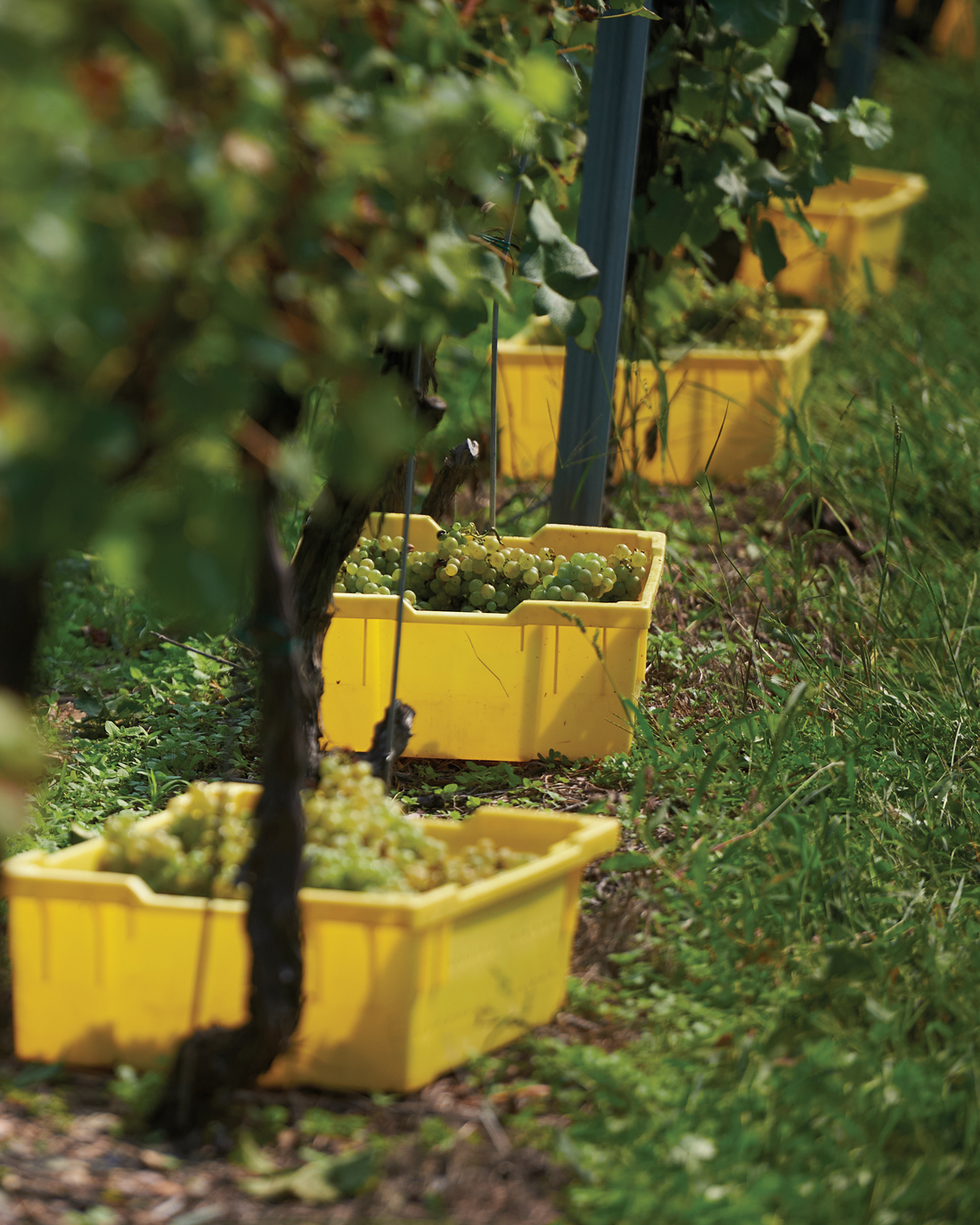
Hand-picked Sémillon grapes await collection and pressing to begin fermenting in stainless steel tanks later that afternoon. Thirty-six acres of vinifera grapes grow on the Waltz farm in Manheim, which has been in their family since 1827. The Waltz family – like my maternal Overly family and many others in our area – traces their roots back to Alsace, a region between France and Germany that is influenced by both cultures and is known for winemaking.
Growing grapes and managing crop health for resale ultimately shifted to include wine production, bottling, inventory management and keeping abreast of shipping and state sales tax laws across the country. Fortunately for Waltz Vineyards, the rewards – and awards – followed.
Jan’s willingness to reinvent the Waltz farmland may well have ensured its longevity. “Preservation has the best intentions, but the land has to be viable,” he says. Waltz has proven that point, diversifying and ultimately reinventing the land, ensuring its sustainability. The offers of developers and investors are less appealing when a farm is fruitful.
An Estate Winery
Waltz is also regarded as an estate winery, which are less common than one might expect. To be considered an estate winery, the winery must own the vineyards in which its grapes are grown. Wine production is also expected to remain on-site. As an estate winery, its owners have an obvious knowledge of the climate, rainfall, heat and past seasonal data that aids in the development of their wine.
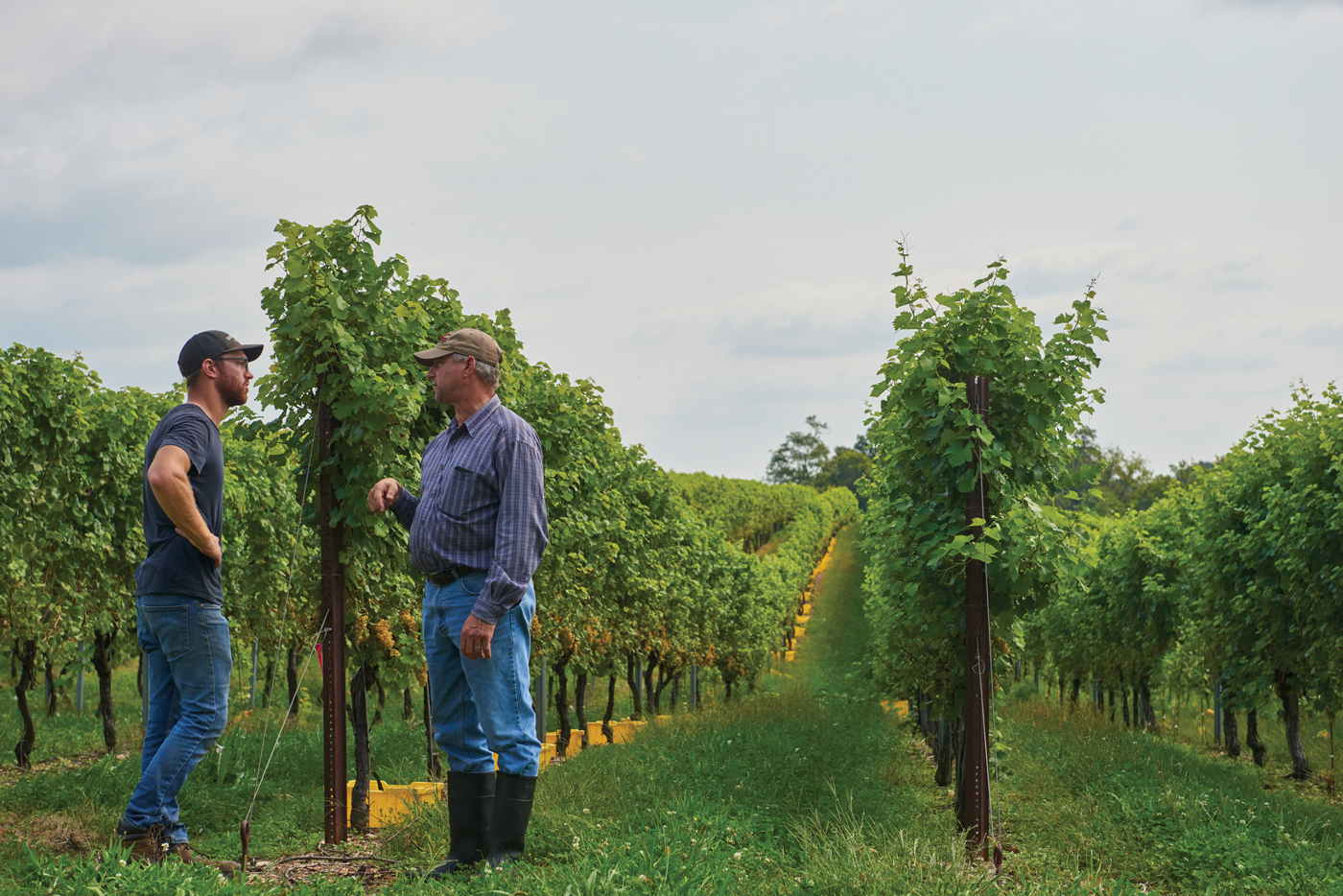
Zach and Jan Waltz discuss the next steps in the process of harvesting Sémillon and Sauvignon Blanc grapes. These white grapes will ferment in stainless steel tanks to produce their 2021 “Fusion” wine.
When it comes time to harvest, an estate winery’s grapes can stay on the vine longer until conditions are optimal. To move the grapes from the field, Jan helms a tractor and transports the hand-picked grapes to the winepress that’s located next to the vineyard’s tasting room. Packaging, transportation and preservation are non-issues during the harvesting process. Grapes harvested in the morning are de-stemmed, pressed and refrigerated that afternoon, preserving a ripe-on-the-vine quality.
The Lay of the Land
The land that defines the property has a lot going for it. Terroir (think terrain) is the taste of wine that’s imparted by characteristics of place, soil, altitude, climate and technique. That process begins by planting varieties that pair well with specific sites and the slope of the landscape. The soil composition and climate on the Waltzes’ farm are quite similar to that of central France, making Bordeaux varietals the grapes (technically, a berry) of choice. “Our best-growing Bordeaux varieties are Cabernet Franc, Cabernet Sauvignon and Merlot,” says Zach.
The well-drained shale and limestone soil is naturally acidic, which works in the vineyards’ favor. Altitude impacts temperatures; a few feet of elevation in the wrong direction can make a difference where growing grapes is concerned. The altitude at the vineyard is 620 feet above sea level, dropping to 550 feet at the main vineyard. At satellite locations, it ranges between 500 and 550 feet. Therefore, cold-hearty varieties are planted further downslope, where pockets of cool, dense air settle. To further ensure the grapes’ longevity, frost fans are used early in the season to push warmer air downward to prevent frost from forming. “Critical winter temperatures are what puts you out of business,” says Jan. “All it takes is one cold day.”
Opposing weather conditions can also lead to problems. During the growing season, humidity is a significant consideration. Too much moisture on grapes leads to Botrytis, a grey mold that captures the attention of fruit flies. Fruit-fly larvae hatch in 24 hours, spread rapidly and feed on and ultimately damage the fruit. Wind and sun exposure can help to combat humid conditions, making the direction in which vines are planted an established method to mitigate the mold issue. This, along with altitude, is known as aspect.
To combat the issues summer weather brings, Waltz plants white grapes in rows spanning east to west, which allows for greater airflow and sunlight to dry dew early in the day, limiting fungi, rot and pests. Their red grapes are planted in rows spanning north to south, offering sunlight to both sides of the grapes throughout the day, contributing to a balanced sugar production and acidity. Some varieties are left hanging on the vine for as long as possible to concentrate color and flavor in the skins.
Fitting the French profile, many of Waltz’s barrels are made of French oak and cooperage, charred to specifications for each variety. Even so, it’s important to the Waltzes that wine be fruit forward and balanced, not hidden behind notes of heavy oak or other flavors.
Waltz’s 2021 Harvest
“Wine production requires balancing three key quantities: acid, sugar and alcohol,” says Zach. “Along with that, it is a winemaker’s job to maximize and preserve the delicate aromas and flavors throughout the two-year-long process in barrels.” Each process is carefully controlled and meticulously executed. For instance, when the grapes are pressed, the gentle process is handled in a nitrogen-purged tank, which prevents the juice from oxidizing. “We don’t want to lose any aromas or flavors,” says Zach.
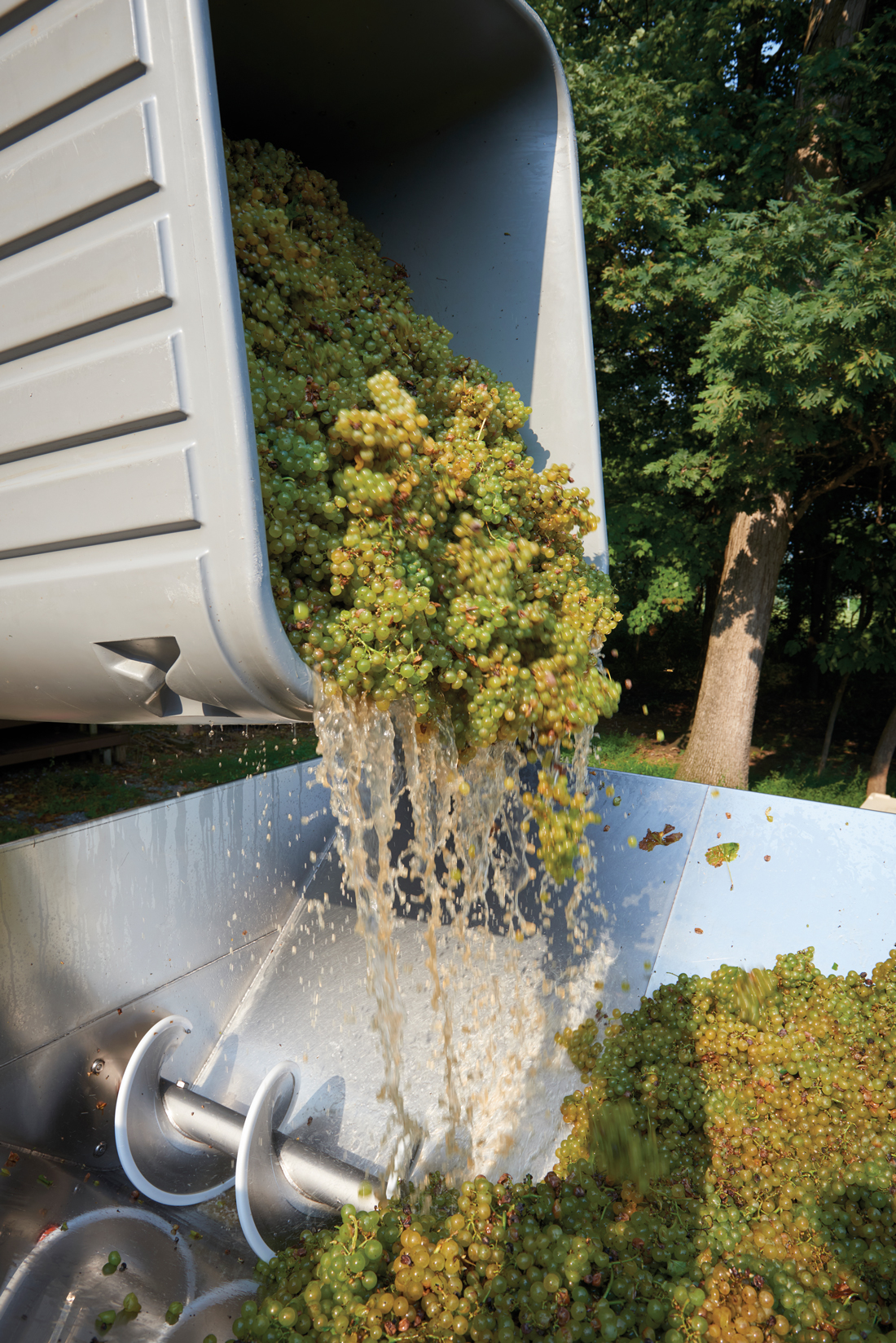
Jan and Zach begin the pressing process. Sémillon grapes bursting with juice under their weight are poured into a hopper for de-stemming, before being pumped to a vacuum press that extracts juice without oxidizing it. The press removes unripe berries, skins, seeds and any remaining stems, thus preventing bitter tannins from being absorbed into the wine. The aroma in the surrounding air is mouthwatering, with notes of fresh, ripe pears.
In 2021, Sémillon grapes were a bumper crop for Waltz, thanks to a narrowly averted disaster. In mid-September, the soil was saturated after two heavy rainstorms, pushing the grapes on the vine to the brink of bursting. The remnants of Hurricane Ida illuminated the weather radar and would soon unleash an immense volume of rain over Lancaster County. If the Sémillon grapes had to endure yet another heavy rain at the end of the season, the berries would burst on the vine, spoiling the crop.
Jan’s experience told him they had a narrow window of a few days to harvest – after the water seeped deeper into the ground from the previous rains and before the tropical rains from the remnants of Ida arrived. Gathering as many people as they could to hand-pick the grapes, Waltz harvested five acres of grapes from 12-year-old vines bearing Sémillon and Sauvignon Blanc grapes. Incredibly, they did it in one day.
The rolling hillside was dotted with roughly 30 workers, who hand-picked 1,000 pounds of grapes every 15 minutes, or two tons per hour. The grapes were inspected and then placed in yellow crates, where they awaited Jan and his tractor-wielding food-grade containers. Bursting with juice and the sweet aromas of pears, the delicate grape skins had already started to break in the containers. According to Jan, had these grapes been destined for another location, they could only be transported by being “separated into small, stacked bins” that would allow for air flow and a better distribution of weight. Additionally, they would have had to be nearly frozen to ensure their safe travel.
It Takes Every Part
Growing up on the farm and being part of the wine-making process, Zach decided early-on that the family’s vineyard is where he wanted to remain. To achieve his goal, Zach enrolled at Cornell University, whose viticulture (growing) and enology (winemaking) programs are considered among the best in the world. Zach has an affinity for chemistry and biology, having spent time studying both with Cornell’s pre-med students, who typically become doctors, veterinarians or scientists. Those sciences provided him with further insight into the wine. According to Zach, natural yeasts are the “coolest tool” in the winemaker’s arsenal, as “they evolve and change their DNA throughout fermentation.”
After graduating, Zach leveraged his education and experiences to work for E. & J. Gallo Winery, which is based in Modesto, California (Central Valley), and dates to 1933. An international distributor of wine, Gallo’s wine portfolio is nearly 100 labels deep. “I worked at one of Gallo’s premium quality wineries called Edna Valley Vineyards; I worked with some of the same varieties that we grow like Chardonnay, Sauvignon Blanc and Cabernet Sauvignon,” says Zach. “I primarily learned quality-control procedures and operational logistics, which are especially important for our winery that is growing fast.”
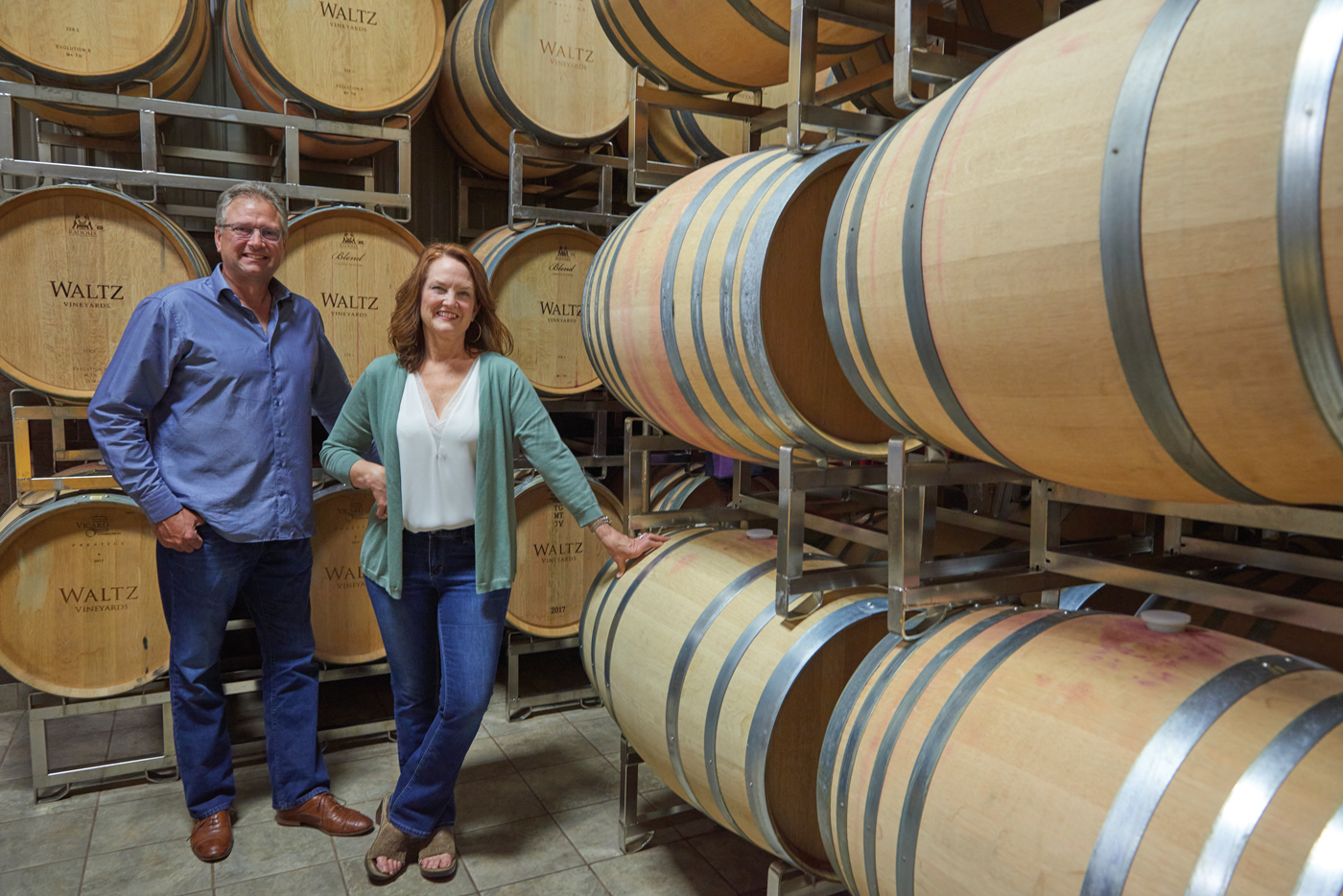
Jan and Kim Waltz in the barrel room of their Manheim winery. Here, the wine is finished in French oak barrels.
While Jan, Kim and Zach are passionate about their craft, it takes more than a few conversations with the Waltzes to begin to grasp how deep the proverbial rabbit hole goes. The two main processes of growing grapes and of winemaking are overwhelmingly sophisticated. Observing the process as an outsider, my sense tells me the agricultural quality and level of production could equate to anywhere in the world. Therefore, it shouldn’t come as a surprise that Waltz has a track record of winning international wine competitions. “Our cellar uses some of the most advanced winemaking technology available,” says Jan.
The future looks roséy. Between Kim and Jan’s experiences in farming and operating a winery and Zach’s growing up on the farm/vineyard, his education and foundation in chemistry and his work experience in California, the Waltz Vineyards Estate Winery is positioned to put their corner of Lancaster County on the map. “It takes every part,” says Zach of the equation that is relied upon to create a bottle of wine.
For more information about Waltz wines, their tasting rooms and wine events, visit waltzvineyards.com.




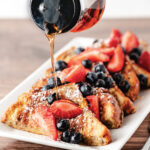
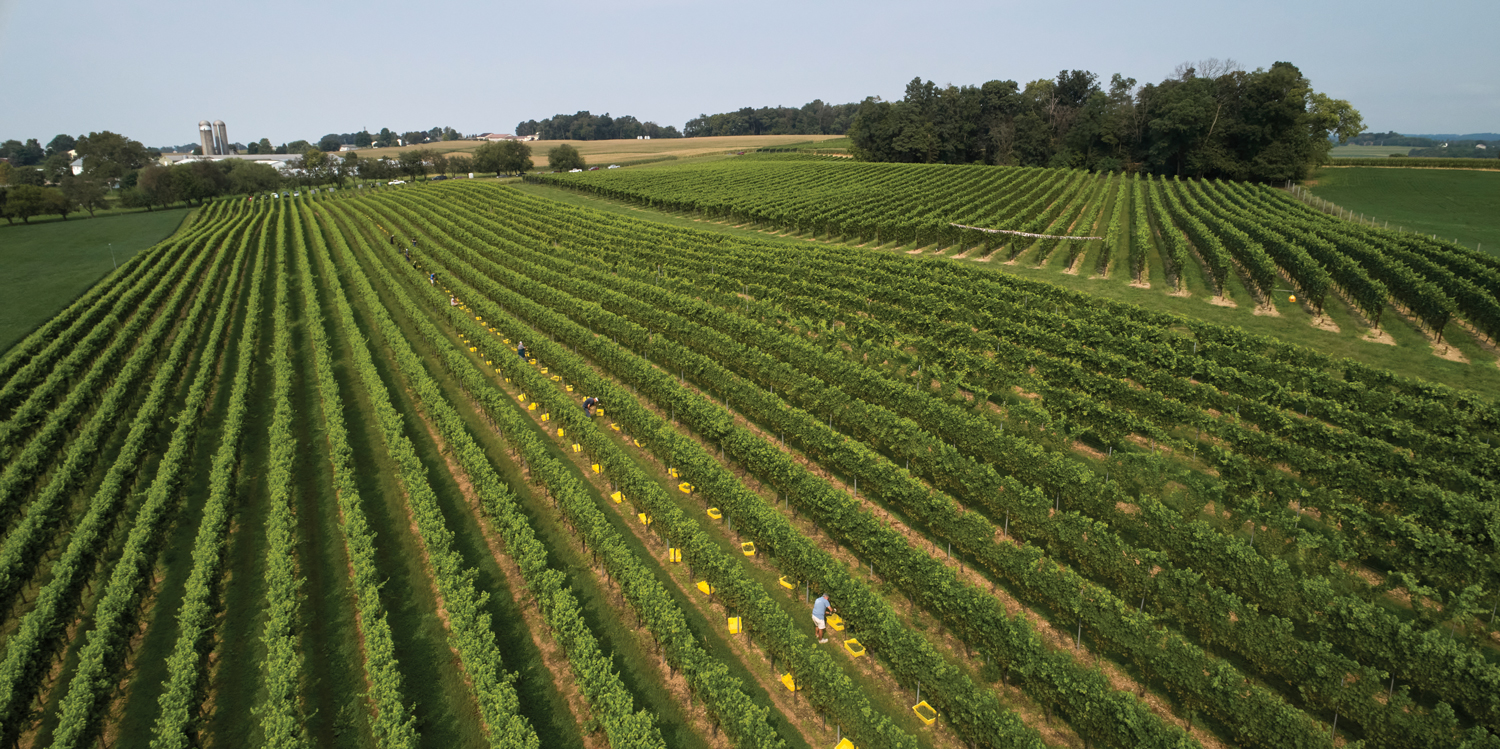
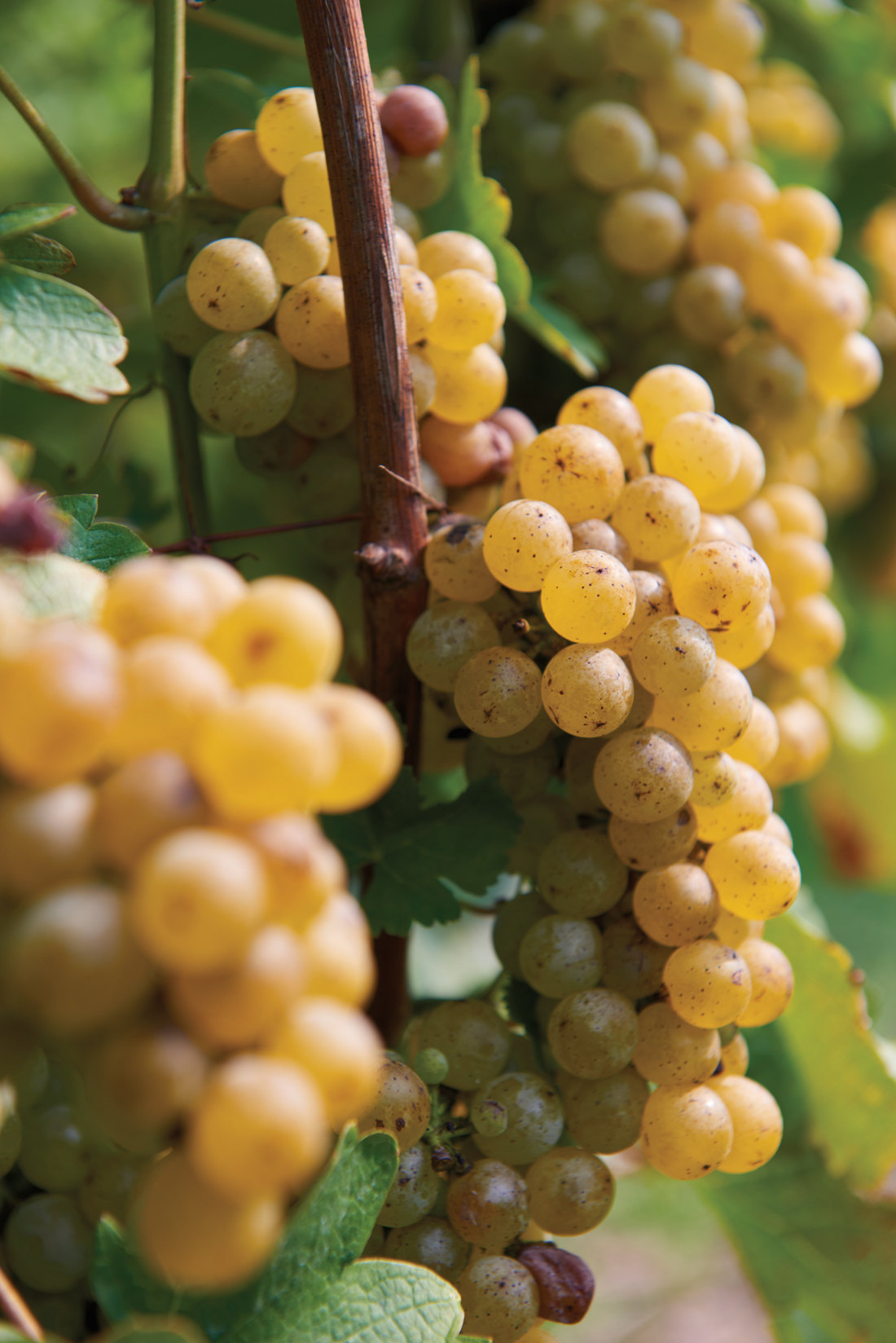
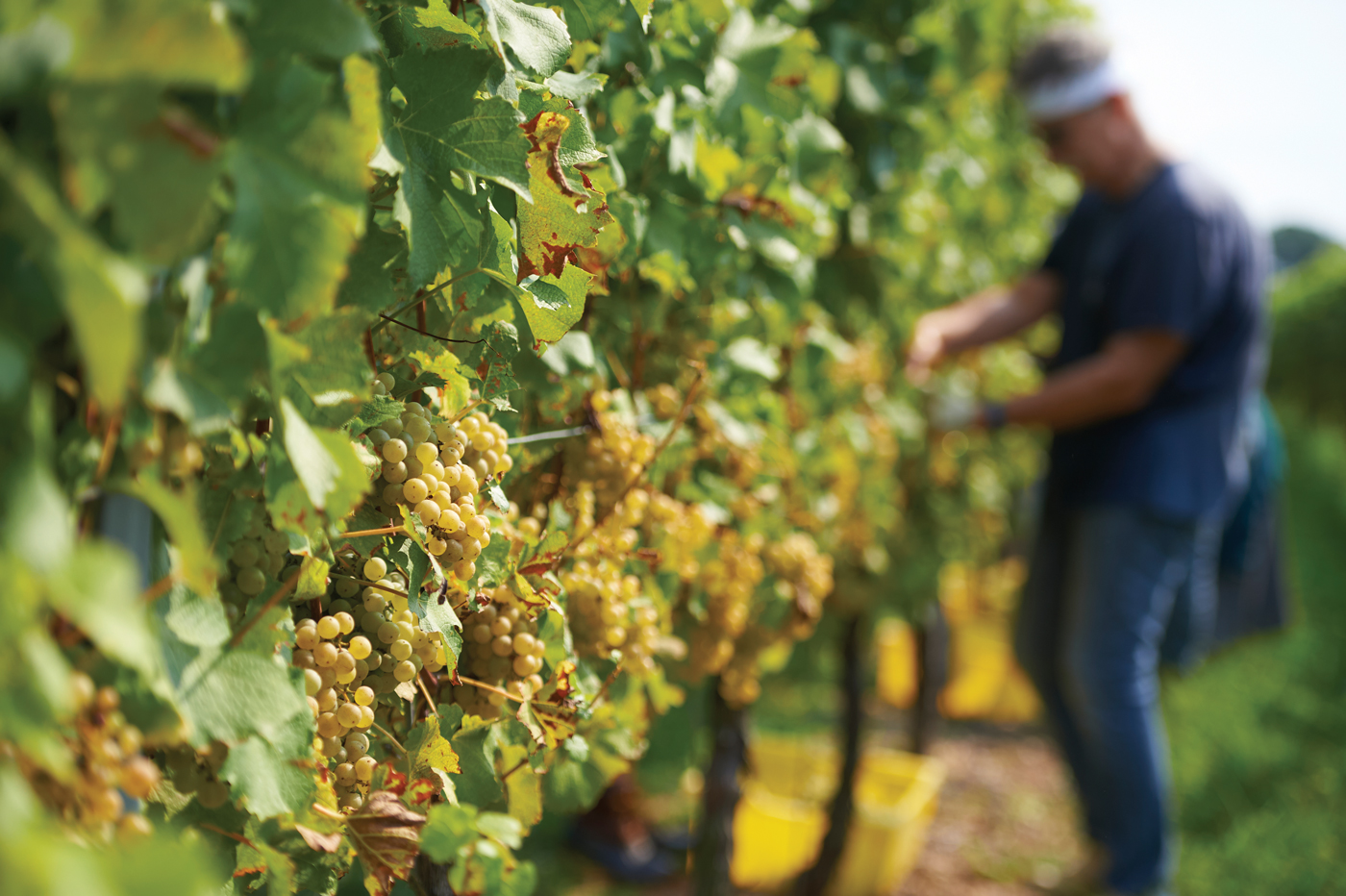
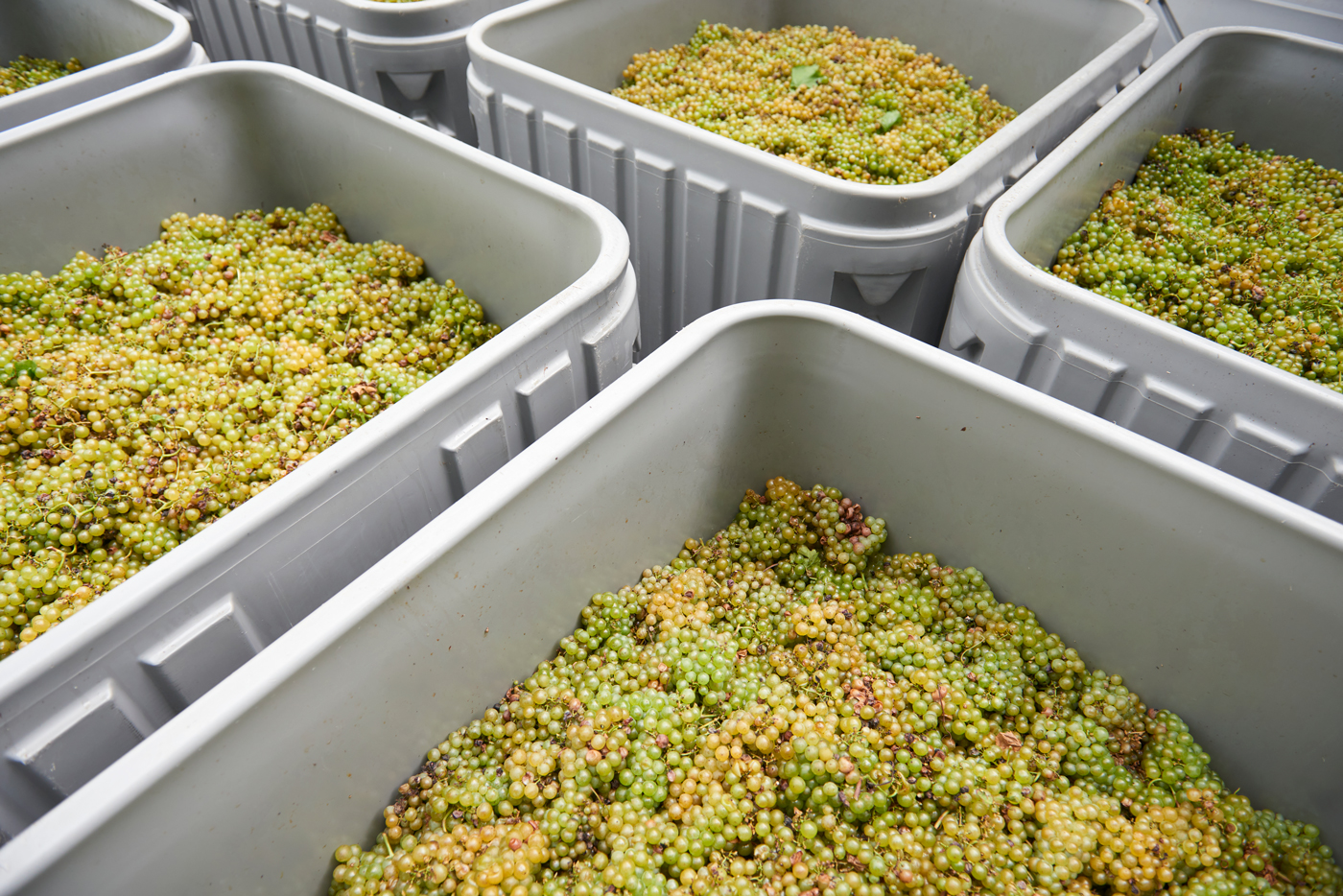
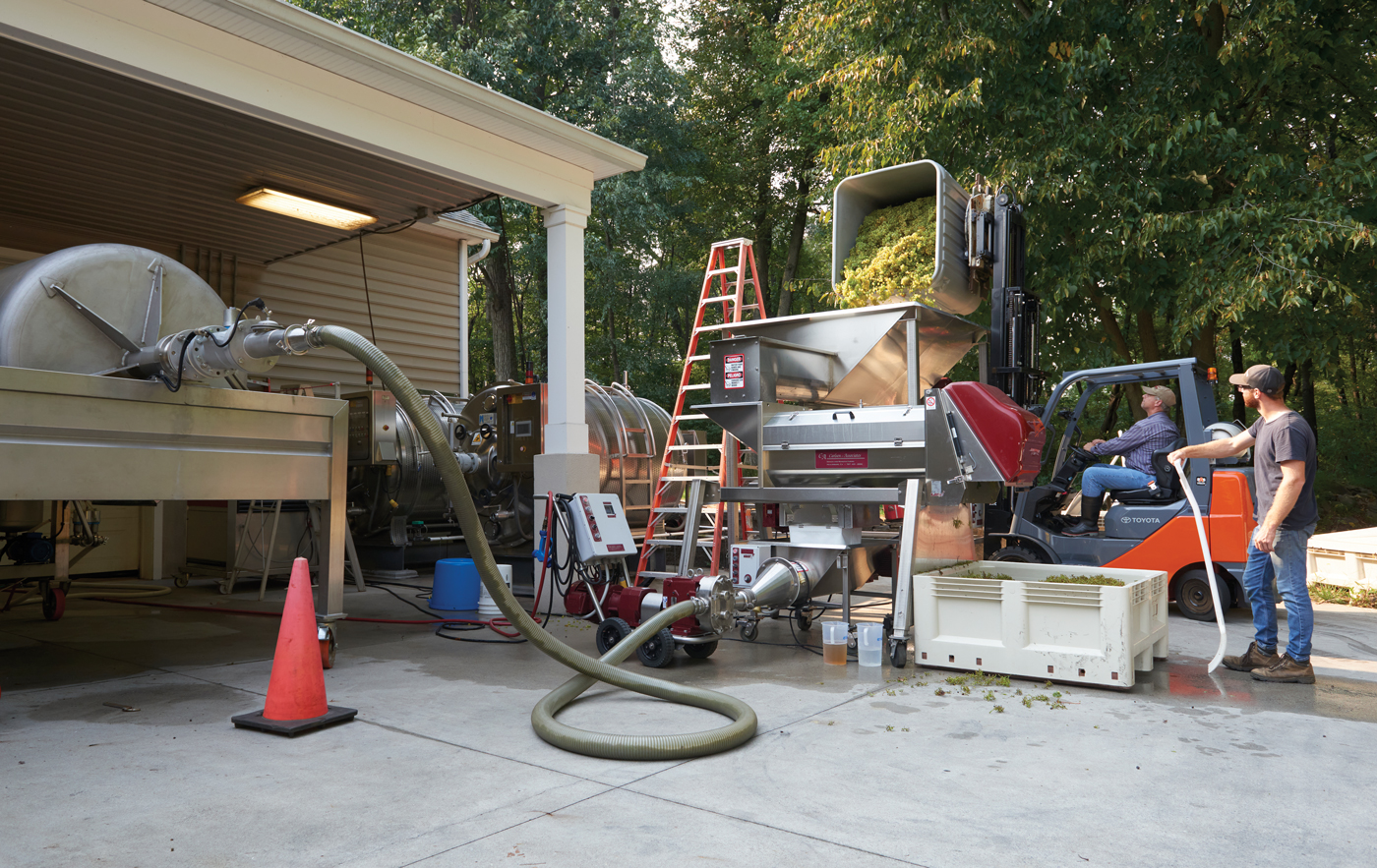
What an informative, well written article about an incredibly complicated business! Waltz wine is the best, and there’s a reason for that!